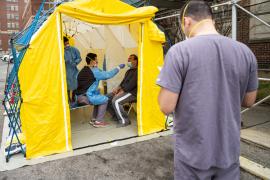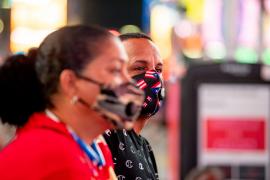The successful national rollout of a future COVID-19 vaccination program will depend on high rates of vaccine uptake, but many states are likely to face serious challenges in distributing the vaccine without strong federal support and partnership, a new Commonwealth Fund study shows.
Although COVID-19 is more contagious and more lethal than influenza, experience with past vaccination efforts is still relevant, the researchers say. Their study finds that adult vaccination rates for seasonal influenza in calendar year 2019 and for the H1N1 flu pandemic in 2009–2010 fell well below the 70 percent threshold that is believed to be necessary to reach herd immunity. The rates for both vaccination programs were low in many states with higher COVID-19 case counts and large Black, Latino, and American Indian populations, whose communities have been among the hardest hit by the pandemic.
Among the study findings:
- Adult vaccination rates for the seasonal flu and H1N1 pandemic varied significantly across states and never met their goals. In calendar year 2019, adult seasonal flu vaccination rates in all 51 U.S. states and jurisdictions fell well below the population goal of 70 percent, with no state achieving a rate above 51 percent and some reaching only half that rate. During the 2009–2010 H1N1 pandemic, when government agencies had more direct control over allocation and distribution, vaccine uptake still averaged only about 23 percent. Many of the same states with lower seasonal flu vaccination rates also reported low adult uptake during H1N1.
- Racial inequities in vaccination rates persist. Annual influenza data reveal racial inequities in adult vaccinations across virtually every state. Georgia, Texas, and Maryland, home to some of the nation’s largest Black communities, report some of the highest racial gaps in adult vaccination rates. Data from the 2009–2010 H1N1 pandemic vaccination program also show significant racial disparities among adults.
- Nearly all states report wide seasonal flu vaccination gaps between white and Latino adults. The vaccination gap for Latino adults, who already face greater barriers to obtaining insurance coverage and accessing care than other groups, is extremely wide within many states. Seventeen states report gaps of at least 15 percentage points; in six of those states, the gap is at least 20 points.
Among the five states with the largest Latino populations — California, Texas, Florida, New York, and Arizona — all but New York report vaccination rate gaps exceeding 10 points.


